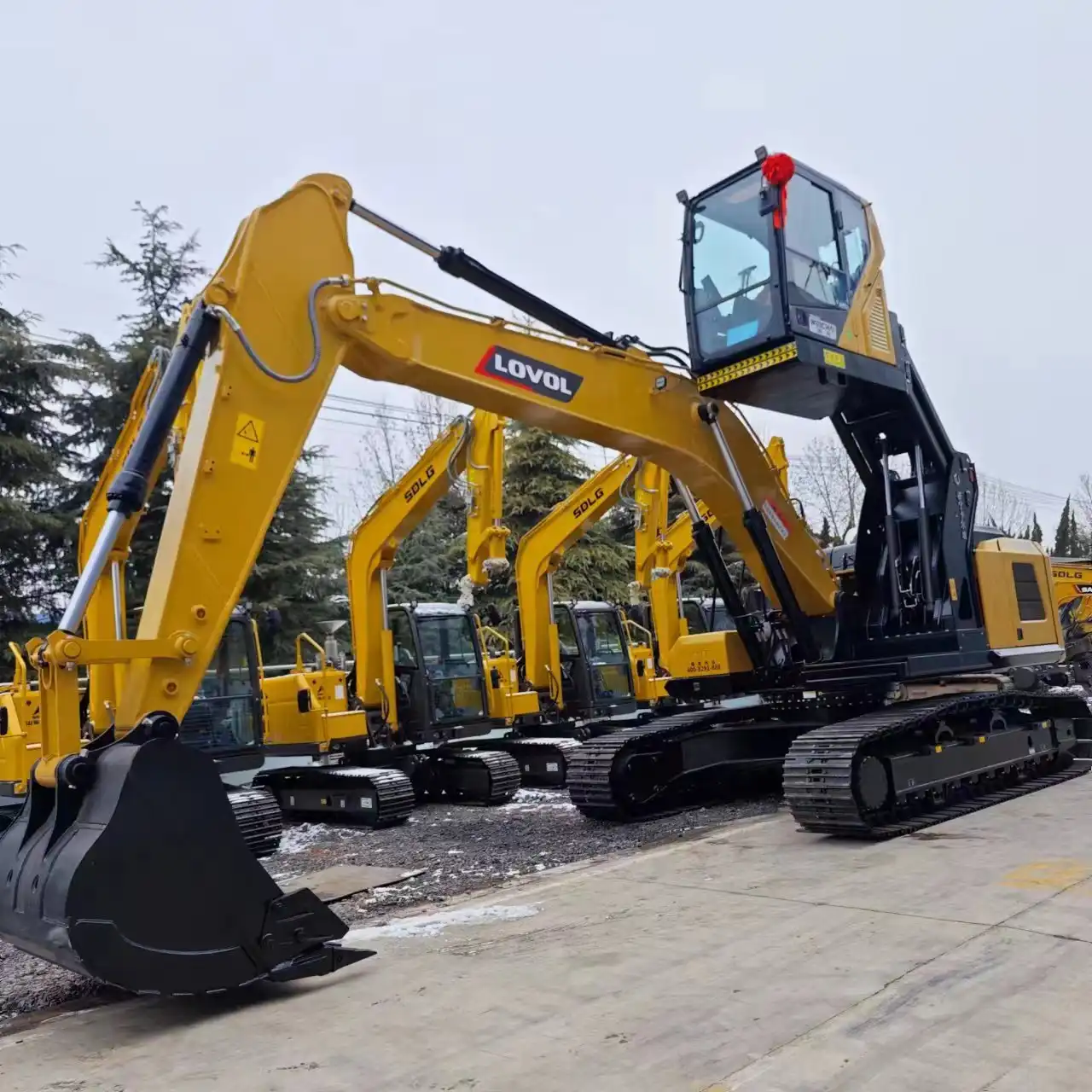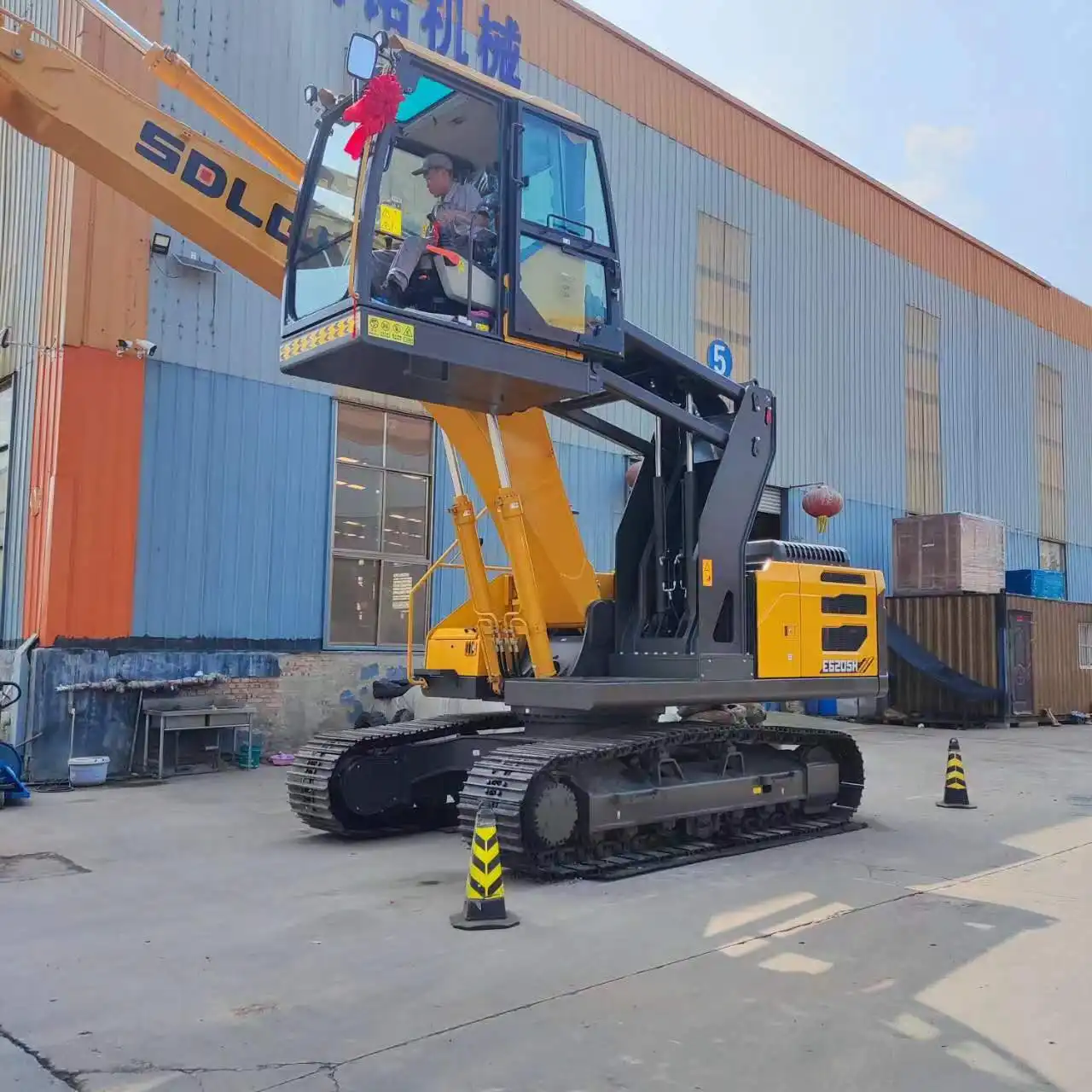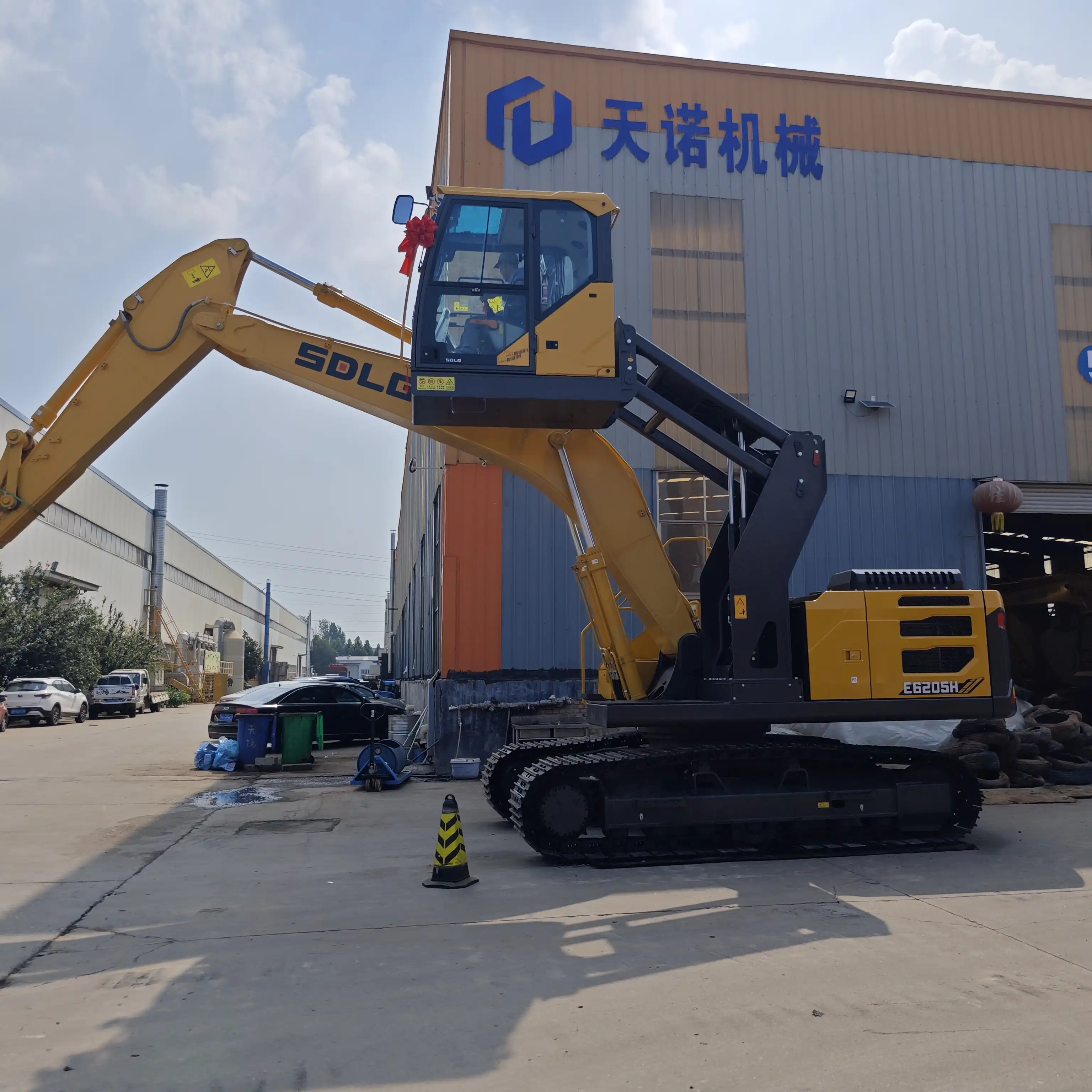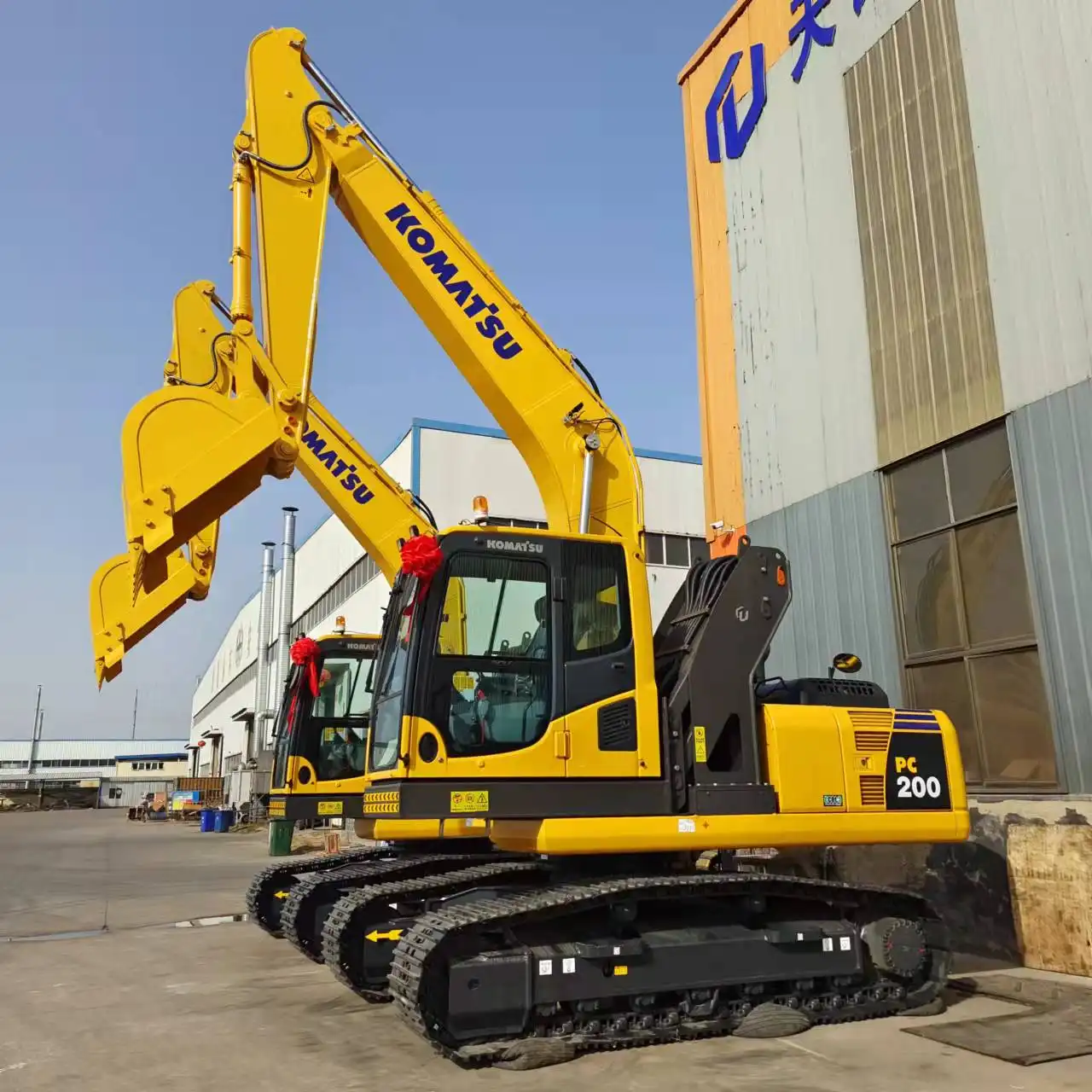What is an above-train excavator cab used for?
A cab is a specialized modification that transforms standard excavators into versatile machines capable of operating in unique environments where conventional equipment cannot reach. Specifically, an above-train excavator cab is an innovative solution designed to enable excavators to work directly above railway tracks while allowing trains to pass safely underneath. These engineering adaptations feature elevated cabs mounted on extended supports, typically with four stabilizing legs that provide the necessary height clearance and stability. The above-train cab from Tiannuo offers an effective passing height of 4300 mm (customizable) and width of 4200 mm (customizable), making it perfect for railway maintenance projects, tunnel operations, and other applications requiring work above active transportation corridors. This specialized equipment allows operators to maintain a continuous workflow even with ongoing train traffic, significantly reducing downtime and increasing operational efficiency while ensuring safety for both railway operations and construction activities.
Railway Track Maintenance

Continuous Maintenance During Active Train Service
Railway infrastructure requires regular maintenance to ensure safe and efficient operations. Traditional methods often necessitate shutting down sections of track, which disrupts schedules and impacts revenue. Above-train excavator cabs present a revolutionary approach by allowing maintenance work to proceed while trains continue to run on schedule. This dual-operation capability dramatically reduces service disruptions and associated costs.
Railway companies worldwide face increasing pressure to maximize network availability while maintaining infrastructure quality. An above-train excavator configuration enables operators to perform essential tasks such as ballast regulation, drainage improvement, and vegetation management without interfering with normal train operations. The extended height clearance of 4300 mm ensures sufficient space for even the tallest locomotives and carriages to pass safely underneath.
Consider the economic implications: every hour of railway downtime can cost thousands in lost revenue and compensation payments. By implementing above-train excavator technology, maintenance windows can overlap with regular service hours, fundamentally changing how railway infrastructure is managed and maintained.
Track-Side Vegetation Management
Vegetation control represents a significant maintenance challenge for railway operators. Overgrown trees and plants near tracks can cause visibility issues, fire hazards, and even damage to passing trains. Above-train excavator configurations excel in this application by enabling precise trimming and removal of trackside vegetation.
The elevated position provides operators with exceptional visibility while the extended reach allows access to vegetation on both sides of the track. With appropriate attachments, a single machine can handle cutting, mulching, and clearing operations without ever needing to occupy the track itself. This results in more comprehensive vegetation management with minimal impact on train schedules.
Railway corridors often traverse challenging terrain where traditional ground-based equipment struggles to operate effectively. The elevated cab provides better sightlines in these environments, allowing operators to work more safely and efficiently regardless of the surrounding landscape features.
Drainage System Maintenance
Proper drainage is crucial for railway track integrity and longevity. Waterlogged ballast accelerates degradation and can compromise track stability. Above-train excavators are particularly valuable for drainage maintenance, allowing operators to clean ditches, install culverts, and reshape drainage channels alongside active tracks.
From their elevated position, operators can better visualize water flow patterns and identify problem areas that might not be visible from ground level. The additional height also provides improved working angles for digging operations, making tasks like ditch cleaning more efficient and effective.
Railway drainage systems often extend beyond the immediate track area, and conventional equipment might struggle to reach these areas without disrupting train service. An above-train configuration allows the excavator to reach across tracks to access drainage infrastructure on both sides, maximizing work efficiency while maintaining train operations.
Tunnel and Metro Operations

Underground Construction Support
Tunnel construction and maintenance present unique challenges that above-train excavator cabs are perfectly suited to address. In underground metro systems and railway tunnels, space constraints often limit equipment options. The elevated cab design allows these machines to work within the confined dimensions of tunnels while maintaining clearance for trains or construction vehicles passing beneath.
During tunnel expansion or repair projects, these specialized excavators can position themselves above active sections, allowing construction to progress without completely shutting down essential transportation corridors. This capability is particularly valuable in busy urban environments where service interruptions cause significant public disruption and economic impact.
The adjustable nature of Tiannuo's excavator modification cab systems means they can be configured to match specific tunnel dimensions and clearance requirements. Whether working in historic tunnels with unusual dimensions or modern metro systems with standardized specifications, the equipment can be tailored to suit the environment perfectly.
Emergency Repairs and Maintenance
Railway tunnels require regular inspection and maintenance to ensure structural integrity and safety. When emergency repairs become necessary, timing is critical. Above-train excavator configurations enable rapid response to situations like tunnel lining failures, water ingress, or track damage without completely halting train service.
The elevated cab provides operators with excellent visibility of overhead structures, allowing them to inspect and repair tunnel ceilings and walls that would be difficult to access with conventional equipment. This visibility advantage translates to more thorough inspections and more effective repairs.
Metro systems in particular benefit from this capability, as they typically operate on tight schedules with minimal tolerance for service disruptions. The ability to perform maintenance work while maintaining at least partial service helps maintain public confidence and minimizes inconvenience to commuters.
Electrification Infrastructure Work
Modern railway systems increasingly rely on overhead electrification. Installing and maintaining catenary systems and associated infrastructure requires specialized equipment that can safely work around electrified components. Above-train excavator cabs provide an ideal platform for such operations.
From their elevated position, operators can reach overhead structures without the risks associated with working directly beneath them. This arrangement is particularly valuable when installing or repairing power supply systems in tunnels where space is already at a premium.
The customizable height of Tiannuo's excavator cab systems ensures they can be precisely configured for specific electrification projects, providing exactly the clearance needed while maximizing operator access to the work area. Additional safety features like protective railings further enhance worker protection when dealing with electrical systems.
Enhanced Visibility and Safety

Improved Operator Sightlines
One of the most significant advantages of an above-train excavator cab is the dramatically improved visibility it offers operators. The elevated position provides a comprehensive view of the work area, surrounding terrain, and any approaching trains or vehicles. This enhanced perspective allows for more precise operations and better situational awareness.
In railway environments, visibility is directly linked to safety. The ability to see approaching trains from a distance gives operators ample time to secure equipment and ensure clearance. Additionally, the elevated viewpoint allows better monitoring of ground crew activities, reducing the risk of accidents caused by miscommunication or blind spots.
For precision tasks like placing materials or performing detailed excavation work, the improved sightlines translate to greater accuracy and efficiency. Operators can better gauge depths and distances, resulting in higher quality workmanship and reduced need for rework or corrections.
Safety Features and Considerations
Safety remains paramount in railway construction and maintenance operations. Above-train excavator cabs incorporate numerous safety features specifically designed for their unique operating environment. Tiannuo's models come equipped with protective railings that prevent falls when operators are entering or exiting the elevated cab.
Communication systems are typically enhanced to ensure operators maintain constant contact with ground crews and railway control centers. This coordination is essential when working above active tracks, as it allows for immediate notification of any unexpected train movements or changes to the work schedule.
The four-leg support system provides exceptional stability, even when performing heavy-duty excavation work at height. This stability is crucial not only for safe operation but also for preventing any shifting that might inadvertently reduce clearance for passing trains. The system's design ensures that once positioned, the excavator maintains its precise location throughout operations.
Accessibility and Operator Comfort
Despite their specialized nature, above-train excavator cabs are designed with operator comfort and accessibility in mind. Entry systems typically include sturdy ladders or stairs with appropriate handrails to ensure safe access to the elevated position.
The cabs themselves incorporate ergonomic controls and seating comparable to standard excavators, minimizing operator fatigue during extended work sessions. Climate control systems are often enhanced to compensate for the increased exposure to elements that comes with the elevated position.
Visibility aids like additional mirrors, cameras, and proximity sensors help operators maintain awareness of their surroundings despite the unusual operating height. These technological enhancements complement the natural visibility advantages of the elevated position, creating a comprehensive awareness system that maximizes both safety and efficiency.
FAQ

①What height clearance does a standard above-train excavator cab provide?
Standard models typically offer 4300 mm of clearance, though Tiannuo can customize this dimension based on specific project requirements.
②Can above-train excavator cabs operate on all types of railway tracks?
These specialized machines are adaptable to most standard gauge railways, though specific track configurations may require customized designs or operating procedures.
③What safety certifications apply to above-train excavator operations?
Operators should comply with relevant railway safety standards, equipment certification requirements, and local regulations governing work on or near active railway lines.
④How quickly can an above-train excavator be repositioned along a track?
The crawler walking operation mode allows for efficient repositioning, controlled by the main machine's track lever, making movement along work sections straightforward.
⑤What bucket capacity is available for above-train excavator configurations?
Tiannuo offers options ranging from 2 to 3.5 cubic meters, suitable for various railway maintenance and construction tasks.
Contact Tiannuo
Above-train cabs represent a specialized yet invaluable solution for railway maintenance, tunnel operations, and other scenarios where equipment must operate above active transportation corridors. Their unique design allows for continuous railway service while maintenance work proceeds, creating significant efficiency gains and cost savings for infrastructure managers.
Tiannuo's above-train excavator cabs combine innovative engineering with practical features like customizable clearance heights, stable four-leg support systems, and integrated safety features. This specialized equipment demonstrates how targeted modifications can transform standard construction machinery into highly specialized tools for niche applications.
For railway operators, construction companies, and maintenance contractors seeking to maximize operational efficiency while minimizing service disruptions, excavator modifications offer a compelling solution worth exploring. To learn more about these specialized excavator modifications and how they might benefit your operations, contact Tiannuo Construction Machinery Co., Ltd at rich@stnd-machinery.com.
References
Railway Track Maintenance Best Practices Handbook, International Railway Association, 2023
Modern Excavator Modifications for Specialized Applications, Construction Equipment Journal, 2024
Safety Standards for Railway Maintenance Equipment, Global Railway Safety Council, 2022
Tunnel Construction and Maintenance Techniques, Underground Engineering Institute, 2023
Optimizing Railway Operations During Infrastructure Maintenance, Transportation Research Quarterly, 2024
About Author: Arm
Arm is a leading expert in the field of specialized construction and railway maintenance equipment, working at Tiannuo Company.

